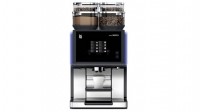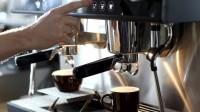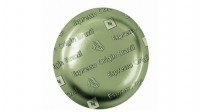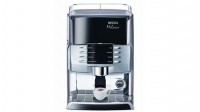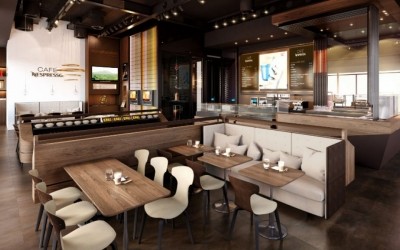How to choose the right coffee machine for your bar or restaurant

Before you start your hunt for a coffee machine, you need to decide what you want to offer. If freshly-ground beans and foamed milk are a must, you are going to have to invest in a machine that will turn out a decent espresso – the basis for lattes, Americanos, cappuccinos and flat whites.
Espresso, which means ‘fast for you’ in Italian, is brewed by forcing pressurised water at near boiling temperature through finely ground coffee beans, creating a drink that is thicker and stronger than filter coffee.
Nearly all commercial espresso machines are pump-driven – meaning they use a motor-drive pump to create the pressure needed to force the water through the coffee. But as technology has evolved, two very different styles of pump-driven machine have emerged: the traditional espresso machine and the bean-to-cup machine.
Traditional machines are usually ‘semi-automatic’ – giving manual control over everything from grinding, dosing and tamping the coffee to setting water pressure and extraction time and foaming the milk. Some are ‘automatic’ and automate the extraction, but grinding, dosing and tamping remain manual.
Bean-to-cup machines, on the other hand, are known as ‘super-automatic’ because they automate the whole process –grinding the coffee and tamping it before extracting the espresso shot to a programmed brew time, frothing the milk and serving it all straight into a cup.
Traditional vs bean to cup
Historically, traditional machines have been the natural choice for restaurants or bars that want to serve a quality coffee. Bean-to-cup machines, meanwhile, have dominated quick serve restaurants, garden centres and contract catering environments, where low-skilled staff must produce a large amount of coffee quickly.
Advances in bean-to-cup technology have closed the gap to some extent, and some of the higher spec machines can turn out an espresso that would satisfy most consumers, but the traditional still has the edge when it comes to quality.
“It is fair to say there have been some significant advances in bean-to-cup technology, which have begun to narrow the gap,” says Andrew Tucker, managing director of Sanremo UK.
“But at the same time some espresso machine manufacturers are doing incredible things with coffee at the top end of the market, which has widened that gap further.”
The main advantages that a bean-to-cup has over a traditional espresso machine lie in its ease of use – with untrained staff able to turn out consistent cups of coffee quickly.
“If you look at bean-to-cup, it is space saving, less technical skill required, consistent product, and there is less coffee competence required so your training is cheaper” says Richard Wylie, UK sales manager for WMF.
“With traditional machines, you need more space because you have grinders that go with it, and ultimately your training needs are higher. Whilst you could say the perception is that traditional machines give a much higher quality coffee, it can be inconsistent depending on the operator.”
Whether or not the need for barista training is perceived as a disadvantage depends on your perspective. As Tucker points out, barista training can be a positive experience for staff.
“Most training on a bean-to-cup machine is remedial and involves the coffee machine company coming in to explain how to clean the machine properly. In contrast, barista training on a traditional espresso machine is a positive learning experience, and usually results in staff developing a new level of interest in coffee, which then passes on to the customers.”
Another aspect to consider is consumer perceptions of the two different technologies. Although bean-to-cup machines can serve up a decent espresso, they will never be impressive as a gleaming traditional machine in the eyes of your customers.
“Undoubtedly the market perceives the traditional coffee machine as meaning better coffee, as opposed to a bean-to-cup machine which is perceived as basic, even towards vending,” says Tucker.
Traditional espresso machines also provide more theatre than a bean-to-cup, which require nothing more than a push of a button.
“That coffee theatre and culture is a big positive for traditionals,” says Wylie. “We all like to think that our coffee has been handmade by the barista to our individual needs, and customers still feel they get the best quality that way.”
A final consideration is cost. Bean-to-cup machines are much more expensive than traditional espresso machines, especially if you want quality. And if you want to splash your cash, a top end espresso machine will always produce a better cup of coffee than an expensive bean-to-cup.
“Some of the top end traditional machines now are so stable in terms of temperature extraction that the coffee they make is remarkably consistent and tastes even better,” says Tucker.
Best of both worlds
Both Wylie and Tucker agree that when it comes down to it, bean-to-cup and traditional espresso machines will serve very different markets, and you need to decide whether convenience and consistency, or quality and theatre, are more important for your business.
However, there are some hybrid machines emerging on the market that claim to offer the best of both worlds. The most recent of these is the WMF Espresso, which automates the entire brewing process but offers complete control and has the good looks of a traditional machine.
“It effectively brews in the same way as a traditional coffee machine, you can manually set all the parameters such as water temperature and tamping pressure,” explains Wylie. “The only difference is that the grinders and hoppers are inbuilt, so it grinds the coffee, doses it into the portafilter and tamps it down, taking away potential areas for error.”
The machine has both an automatic steam wand and a variable steam wand, meaning the operator can either foam the milk manually or choose from one of three automatic milk foam options. “It is about all your members of staff being the barista and being able to produce the same cup of coffee no matter who is making it,” Wylie adds.
Of course this does come at a cost, and the machines have a price point that would hit the higher end of the traditional espresso market – making them more suitable for high volume businesses with low-skilled staff that want to tap into the ‘coffee culture’ than businesses who sell lower volumes but have time for training.
What about pods?
An alternative option to an espresso machine is the capsule or pod machine – which bypasses the grinding, tamping and dosing of fresh coffee beans altogether and uses a pre-filled pods to create a range of drinks.
Led by the mighty Nespresso, capsule machines have taken the consumer market by storm and are now infiltrating even the most exclusive hospitality establishments. According to Nespresso, its machines can now be found in the kitchens of around 30 per cent of the world's 2,400 Michelin-starred restaurants, including Sketch, The Fat Duck, The Pig Hotel and The Ledbury.
Ian McDonald, B2B commercial manager for Nespresso, says the main appeal of capsule machines is the consistency they offer – with everything from the quality of the coffee to the brewing process carefully controlled.
“This kind of quality assurance and consistent delivery is extremely beneficial for high-volume restaurants during busy service times when quality can easily be sacrificed by time constraints and the need for quick service,” he explains.
Capsule machines are also easier to clean than traditional espresso machines, which is a big win for any business that has spent hours sweeping up coffee grounds and washing out group handles.
But there are some disadvantages to taking the capsule route – including the fact that you have virtually no control over the brewing process and you are limited in your choice of coffee –removing the option to set yourself apart by sourcing a limited-edition single origin or offering a variety of locally roasted blends.
“There is no alteration and you can’t adjust the coffee to be a bit stronger or a bit weaker. You get what you are given and there is little flexibility in terms of individualising,” says Wylie.
And pre-ground capsules will arguably never produce the same quality of coffee as freshly ground beans. “Once coffee is ground it is on its way downhill,” explains Tucker. “They say it loses up to 40 per cent of its aroma in the first 15 minutes and it is that aroma which carries through to what you taste in your palate.
“So clearly, if the coffee is ground in a factory before being processed and sealed into plastic pods, by the time it gets to the consumer it is never going to be as fresh and aromatic as coffee made from beans which are ground there and then.”
However, if you are looking for speed, consistency and convenience, they are an affordable and realistic option.
Automatic for the people
Another option for fast and consistent coffee is a fully-automated vending style machine, such as the Nescafe Milano – which can serve a cup of coffee 30 per cent faster than a typical bean-to-cup machine.
“Delivering a cup of quality specialty coffee doesn’t have to mean buying a traditional espresso machine that requires the specialist training,” says Matt Lane, head of Beverage Solutions at Nestle Professional.
“The evolution in machines has the potential to drive incremental business for operators; many fully-automated machines can now make a delicious range of quality coffees without the need for a barista, saving time, money and adding to the bottom line.”
Automated machines will never rival an espresso or bean-to-cup in terms of coffee quality, but they are a good choice for businesses that have low-skilled staff and a requirement to produce high volumes of coffee quickly.
Artisan additions
But if you are looking for quality above speed, and want to compete with some of the high-end coffee shops cropping up on the high streets, you should consider one of the artisan brewing methods propelled to fame when the ‘third wave’ of coffee culture crashed on UK shores.
If it is theatre you are after, you might want to think about vacuum or ‘syphon’ brewers – which consist of two chambers, a syphon that connects them, a filter and a heat source. To brew the coffee, heat is applied to the bottom chamber, causing water and vapour to move up into the top chamber, where it mixes with the coffee grounds. After 1-3 mins of brewing time the heat is removed, causing the liquid to move back through the syphon into the bottom chamber, resulting in a coffee with a clean, crisp taste.
But for ease of use, cost efficiency and coffee quality, it is hard to beat the humble Aeropress, which consists of two plastic tubes that fit together – one of which has a plastic plunger to create a powerful vacuum that pushes the water through the coffee at high pressure.
“The AeroPress is quick and easy to use and makes exceptionally smooth, coffee without any bitterness allowing the full spectrum of flavours to be appreciated,” says Jonathan Money, managing director of Cream Supplies. “The initial perception to the uninitiated is that it works along the lines of a cafetiere. In fact, this is a great misconception as it’s a very different product that makes far superior coffee.”
The low cost of an AeroPress (around £20) makes them an attractive alternative to expensive espresso machines, although most restaurants and bars would be best placed to use them in conjunction with an espresso machine to broaden their coffee offering.
“The AeroPress is not intended to replace an espresso machine. Instead, it should be viewed as an additional item that allows baristas to be creative with a speciality filter menu exploring the plethora of different coffees available,” says Money.
“The AeroPress is very cheap, so baristas can use several at any one time allowing them to offer a range of unusual and interesting single origin coffees. For example, establishments that use AeroPresses often have a single origin coffee of the day or week.”
This feature was written by BigHospitality and sponsored by WMF
Sponsor Profile:
WMF has over 80 years’ experience in the manufacture of high quality coffee machines renowned for their stylish looks, functionality and high level of reliability. Its success in the coffee machine industry has been due to a combination of its ability to innovate as well as the production of machines of outstanding quality and design.
